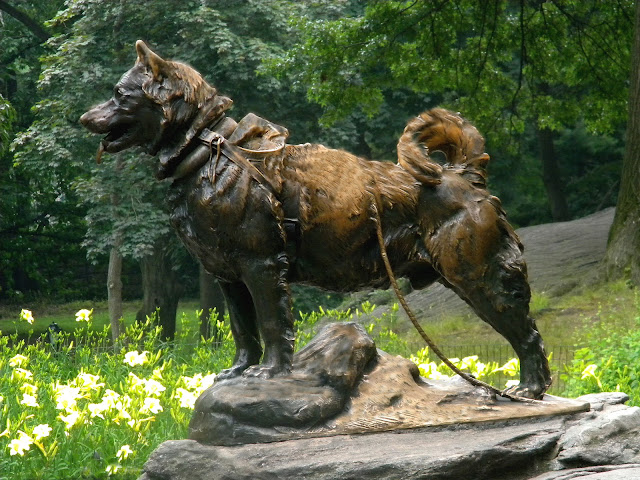Wednesday, July 10, 2013
Balto Siberian Husky sled dog
Balto Siberian Husky sled dog. on the east park drive just after the zoo on our right, looking east toward 5th avenue.
Image License: I, (sookietex) the creator of this work, hereby release it into the public domain. This applies worldwide. In case this is not legally possible, I grant any entity the right to use this work for any purpose, without any conditions, unless such conditions are required by law.
If This image is subject to copyright in your jurisdiction, i (sookietex) the copyright holder have irrevocably released all rights to it, allowing it to be freely reproduced, distributed, transmitted, used, modified, built upon, or otherwise exploited in any way by anyone for any purpose, commercial or non-commercial, with or without attribution of the author, as if in the public domain.
Balto (1919 – March 14, 1933) was a Siberian Husky sled dog who led his team on the final leg of the 1925 serum run to Nome, in which diphtheria antitoxin was transported from Nenana, Alaska, to Nome by dog sled to combat an outbreak of the disease. The run is commemorated by the annual Iditarod Trail Sled Dog Race. Balto was named after the Sami explorer and adventurer Samuel Balto. Balto died at the age of 14.
The statue of Balto by Frederick George Richard Roth (1872 – 1944) was unveiled on December 17, 1925. The statue is bronze, and is set on a large granite rock near the entrance of Central Park at East 67th Street, by the Tisch Children's Zoo.
A plaque on the front is engraved with seven sled dogs running through a blizzard, and the following words: Dedicated to the indomitable spirit of the sled dogs that relayed antitoxins 660 miles over rough ice, across treacherous waters, through Arctic blizzards from Nenana to the relief of stricken Nome in the Winter of 1925. ENDURANCE FIDELITY INTELLIGENCE
Subscribe to:
Post Comments (Atom)

No comments:
Post a Comment